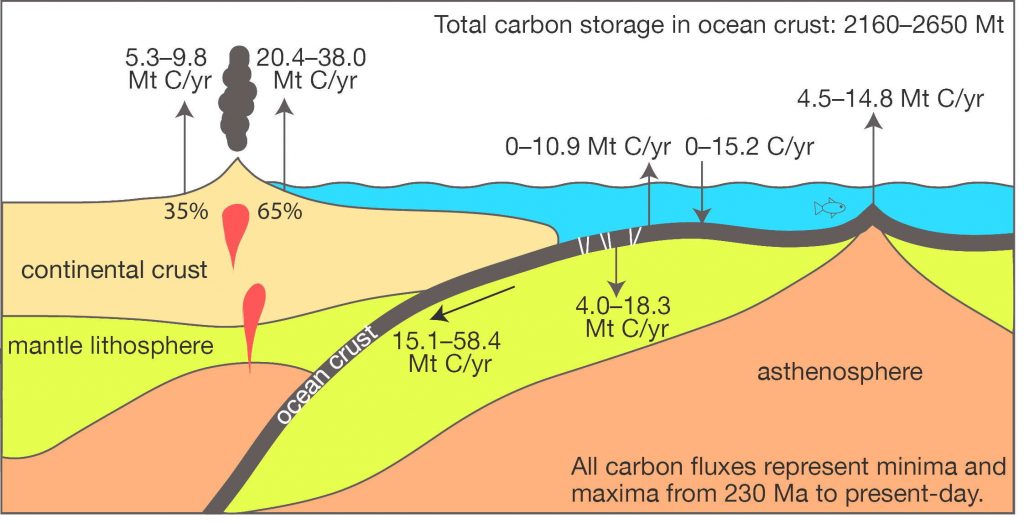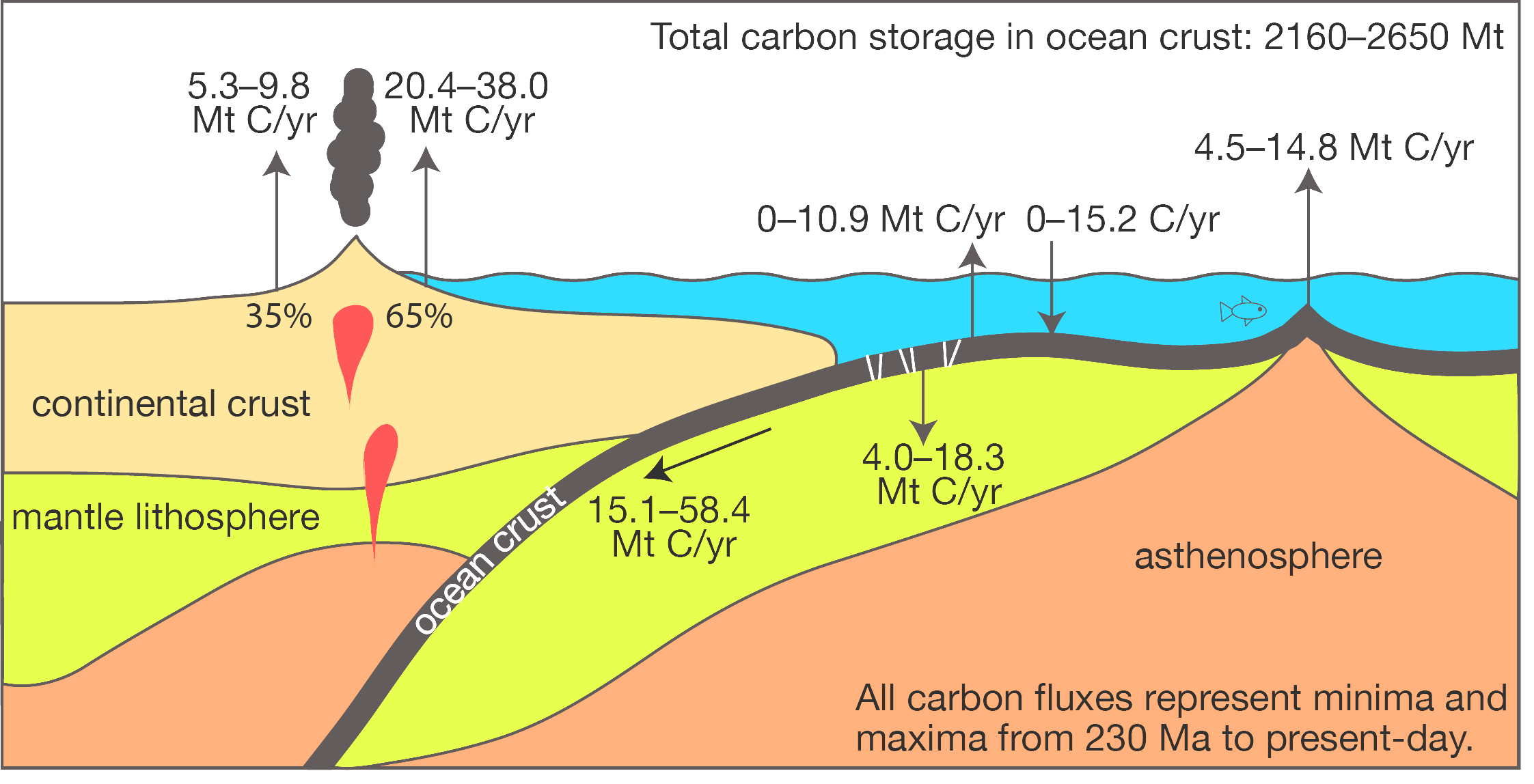
Citation: Müller, R.D. and Dutkiewicz, A., 2018, Oceanic crustal carbon cycle drives 26 million-year atmospheric carbon dioxide periodicities, Science Advances, 4:eaaq0500, 1-7.
Atmospheric carbon dioxide (CO2) data for the last 420 million years (My) show long-term fluctuations related to supercontinent cycles as well as shorter cycles at 26–32 My whose origin is unknown. Periodicities of 26–30 My occur in diverse geological phenomena including mass extinctions, flood basalt volcanism, ocean anoxic events, deposition of massive evaporites, sequence boundaries and orogenic events, and have previously been linked to an extraterrestrial mechanism. The vast oceanic crustal carbon reservoir is an alternative potential driving force of climate fluctuations at these time scales, with hydrothermal crustal carbon uptake occurring mostly in young crust, with a strong dependence on ocean bottom water temperature. Here we combine a global plate model and oceanic paleo-age grids with estimates of paleo-ocean bottom water temperatures to track the evolution of the oceanic crustal carbon reservoir over the past 230 My. We show that seafloor spreading rates as well as the storage, subduction and emission of oceanic crustal and mantle CO2 fluctuate with a period of 26 My. A connection with seafloor spreading rates and equivalent cycles in subduction zone rollback suggests that these periodicities are driven by the dynamics of subduction zone migration. The oceanic crust-mantle carbon cycle is thus a previously overlooked mechanism that connects plate tectonic pulsing with fluctuations in atmospheric carbon and surface environments.
Supplementary data can be accessed here:
https://www.earthbyte.org/webdav/ftp/Data_Collections/Muller_Dutkiewicz_2018_SciAdv/
and the python workflows used in this paper are accessible here:
https://github.com/EarthByte/PlateTectonicTools
The two notebooks used in this paper are:
The notebook for sampling rasters along subduction zones also outputs total subduction zone length. Note that this computation is not always entirely accurate if the plate topology model includes minor errors. In a perfect, time-dependent plate topology model each line segment needs to be shared by exactly two plates. A script designed to deal with plate topology deficiencies in terms of computing subduction zone length can be found here:
https://zenodo.org/record/154001#.WhooR7RdIkR
Animations for this paper can be found on the EarthByte youtube channel:
https://www.youtube.com/watch?v=ofLFzvyMNUc
https://www.youtube.com/watch?v=WgA7L1mqRFw
![]()

